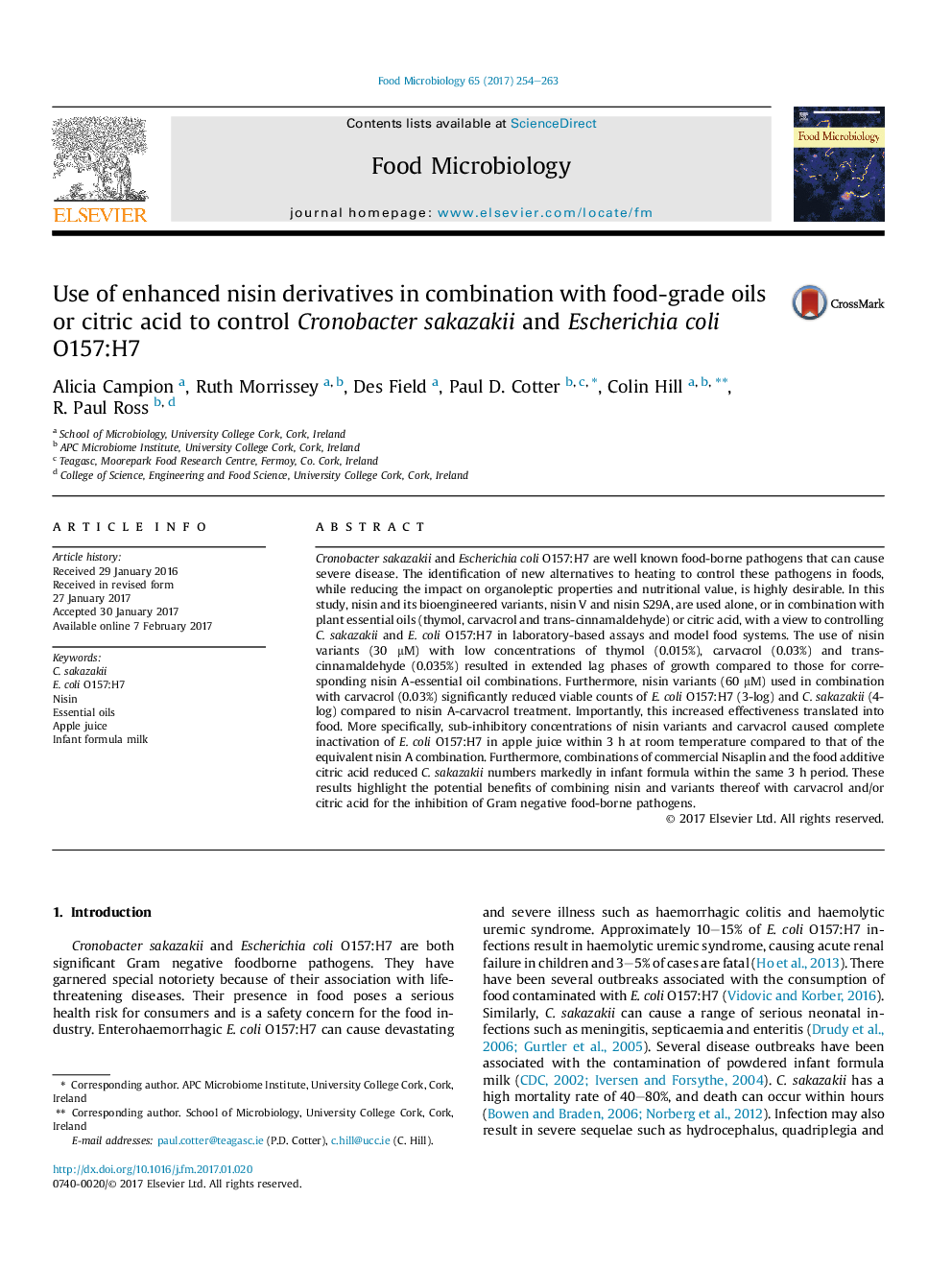| کد مقاله | کد نشریه | سال انتشار | مقاله انگلیسی | نسخه تمام متن |
|---|---|---|---|---|
| 5740151 | 1616236 | 2017 | 10 صفحه PDF | دانلود رایگان |

- Bioengineered nisin variants and essential oils were tested for inactivation of C. sakazakii and E. coli O157:H7.
- Nisin variant-essential oil combinations caused extended lag phases of growth compared to nisin A-essential oil treatment.
- Nisin variant-carvacrol combinations significantly reduced C. sakazakii and E. coli compared to nisin A-carvacrol treatment.
- Nisin variant-carvacrol combinations caused inactivation of E. coli in apple juice compared to nisin A-carvacrol treatment.
- Commercial Nisaplin and citric acid combinations also resulted in complete inactivation of C. sakazakii in infant formula.
Cronobacter sakazakii and Escherichia coli O157:H7 are well known food-borne pathogens that can cause severe disease. The identification of new alternatives to heating to control these pathogens in foods, while reducing the impact on organoleptic properties and nutritional value, is highly desirable. In this study, nisin and its bioengineered variants, nisin V and nisin S29A, are used alone, or in combination with plant essential oils (thymol, carvacrol and trans-cinnamaldehyde) or citric acid, with a view to controlling C. sakazakii and E. coli O157:H7 in laboratory-based assays and model food systems. The use of nisin variants (30 μM) with low concentrations of thymol (0.015%), carvacrol (0.03%) and trans-cinnamaldehyde (0.035%) resulted in extended lag phases of growth compared to those for corresponding nisin A-essential oil combinations. Furthermore, nisin variants (60 μM) used in combination with carvacrol (0.03%) significantly reduced viable counts of E. coli O157:H7 (3-log) and C. sakazakii (4-log) compared to nisin A-carvacrol treatment. Importantly, this increased effectiveness translated into food. More specifically, sub-inhibitory concentrations of nisin variants and carvacrol caused complete inactivation of E. coli O157:H7 in apple juice within 3 h at room temperature compared to that of the equivalent nisin A combination. Furthermore, combinations of commercial Nisaplin and the food additive citric acid reduced C. sakazakii numbers markedly in infant formula within the same 3 h period. These results highlight the potential benefits of combining nisin and variants thereof with carvacrol and/or citric acid for the inhibition of Gram negative food-borne pathogens.
Journal: Food Microbiology - Volume 65, August 2017, Pages 254-263